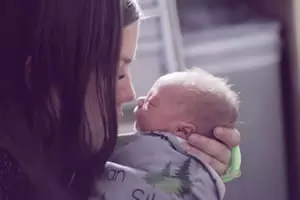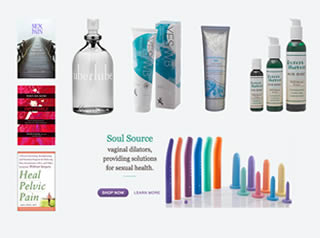
The Femina Physical Therapy Blog
Featuring original articles by our staff about current events and trends
Explore our insightful blog articles on pelvic health, where we delve into essential topics that empower and educate. From understanding pelvic floor disorders to strategies for conquering infertility, our content is designed for those seeking knowledge and support. We discuss the latest research, expert advice, and practical tips to enhance your well-being and foster a deeper connection to your body.
Featured From the Blog:
- Details
- 19793 Views

Levator Ani Avulsion: Understand your pelvic anatomy to better understand your injury
The pelvic floor is a group of muscles positioned like a hammock along our saddle region.
The group of muscles attach from our pubic bone on the inside and then to our lateral pelvic walls with a bundle of collagen fibers called the levator arch, and attach to the ischial spines (the inside of the sit bones) and tailbone on the back side. During vaginal childbirth, the pubococcygeus muscle, a group of pelvic floor muscles, stretches 3.26 times more than its normal length to make room for the coming baby in the vaginal canal! As you can imagine, this may result in some perineal tearing and/or levator ani avulsion.
Read more: Pelvic Floor Injury During Childbirth: All About Levator...
- Details
- 7422 Views

A healthy lifestyle includes getting back to exercise postpartum
Exercise has shown to be beneficial in all stages of life, and the postpartum period is no exception.
Some of the benefits of postpartum exercise are:
- Strengthen and tone abdominal muscles
- Boosts energy
- May help prevent postpartum depression
- Promotes better sleep
- Relieves stress
- Can help you lose the extra weight that you may have gained during pregnancy
(ACOG, July 2019).
Even with all these benefits, research shows that most mothers stop participating in exercise programs which leads to increased weight gain and obesity (Minig et al., and O’Toole et al., 2003). There are many adjustments that have to be made when becoming a new mother and the information on the internet regarding postpartum exercise can be misguided and overwhelming. Let's break down what the literature says about guidelines for returning to exercise postpartum.
- Details
- 6903 Views

Mommy tummy aka diastasis recti abdominis (DRA) is a prevalent issue.
One in three American moms have DRA that persists greater than a year.
So what is a diastasis recti? It is the stretching of the linea alba, a connective tissue that runs down the midline of the abdomen and connects the abdominal muscles. The stretching happens during pregnancy in almost 100% of mothers to make room for a growing baby. Many of these moms are told this is a normal part of pregnancy, even by their healthcare providers.
DRA is not just about appearance, it is also connected to pelvic floor dysfunctions as well as pelvic and low back pain. In a study by Kari Bo et al., they found that mothers in the US with DRA were also more likely to have the following:
Read more: Mommy Tummy - Not Something You Have to Just Live With
- Details
- 6320 Views

What is Anal Incontinence?
Anal Incontinence is defined as the complaint of involuntary loss of liquid or solid stool or the involuntary loss of gas.
It is supposedly an underreported condition because of its stigmatizing nature. It occurs in approximately 50% of women at long-term follow-up after anal sphincter injuries (Gommesen et al., 2019; Haylen et al., 2010; Damon et al., 2006; Cotterill, 2008).
- Details
- 7838 Views

Many women experience lower libido, vaginal dryness, sore muscles, and tender skin in the genital area after childbirth.
These issues can make sex uncomfortable, or even unappealing.
Many women are not comfortable bringing up their sex lives to their doctors and midwives, thinking that it “will get better with time.” However, if you find your sexual health impacted for more than a few months after childbirth, you might start to wonder when you’ll be feeling back to normal.
Read more: Common Postpartum Issues That Make Sex Painful - and What...
- Details
- 49505 Views

Pelvic pain during the postpartum period is common, even for those who had a “perfect and easy” pregnancy, labor and delivery. Often times, healthcare providers will tell women that the pain “will get better with time,” however it's important to advocate for yourself and seek out care if you feel like you need it. Read my previous article about advocating for your postpartum care here.
Common types of postpartum pelvic pain and what you can do at home:
Vaginal Dryness
After delivery, your estrogen levels drop and progesterone levels stay high, especially if your are breastfeeding.
What you can do:
A simple solution can be drinking more water and using a water-based lubricant, read my previous blog on choosing the right lubricant for you.
Read more: Postpartum Pelvic Pain and What You Can Do About It
- Details
- 7375 Views

Proper Postpartum Care is Crucial to Prevent "Ghostpartum"
Today we are addressing “Ghostpartum,” which may sound like a Halloween ghoul or goblin, but is actually a term used to describe the postpartum period where many do not receive appropriate care as they transition from pregnancy to parenthood. In fact, according to the American College of OB/GYN (ACOG), up to 40 percent of postpartum folks do not even seek proper postpartum care.
Read more: Ghostpartum | Advocating for Proper Postpartum Care












